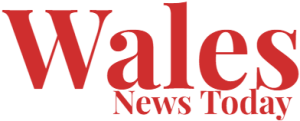Mobile ‘not-spots’ throughout Mid Wales are set to be identified by data-capturing devices in bin lorries.
Growing Mid Wales (GMW) will use advanced mobile data-capturing devices installed in waste collection vehicles across Powys and Ceredigion.
This project is one of the first of its kind in Wales and aims to identify areas with poor mobile coverage and network capacity, known as ‘mobile not-spots.’
Waste collection vehicles will continue their regular routes. GMW says that using the bin lorries is a cost-effective approach which provides an efficient solution for mapping mobile coverage across the region.
Data from the four main mobile network operators – EE, O2, Three, and Vodafone – will be collected. GMW will use this data to develop targeted projects and interventions to address connectivity challenges in key areas.
Driving this project forward for Growing Mid Wales is the Mid Wales Growth Deal Digital Programme. The Mid Wales Growth Deal is a long-term investment with a combined commitment of £110 million from UK and Welsh Governments to catalyse economic recovery and growth across the region.
Supported by local authorities in Powys and Ceredigion and funded by the UK Shared Prosperity Fund from the UK Government, the project will also produce a coverage checker tool. This free tool, to be launched on the Growing Mid Wales website later this summer, will allow residents and stakeholders to check mobile coverage in their areas and determine the most suitable mobile providers for their needs, enhancing digital transparency in Mid Wales.
GMW is collaborating with mobile network analysts Streetwave, chosen for their groundbreaking and cost-effective approach.
The GMW team said:
“We are thrilled to launch this groundbreaking project in Mid Wales. Identifying and addressing ‘mobile not-spots’ and areas of poor network capacity is crucial for the region’s development.
“This initiative aligns with GMW‘s overarching goals, supporting decision-making for digital infrastructure deployments, regional economic development, and innovation. Having better information about coverage will increase our ability to work with commercial providers to address genuine not-spots and problem areas in coverage. “In turn, this will help us pinpoint the areas where public intervention may be required to accelerate and/or enable deployment to ensure we have safe, reliable coverage across the region.”
